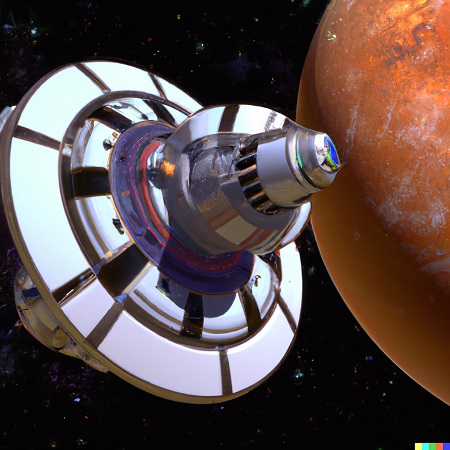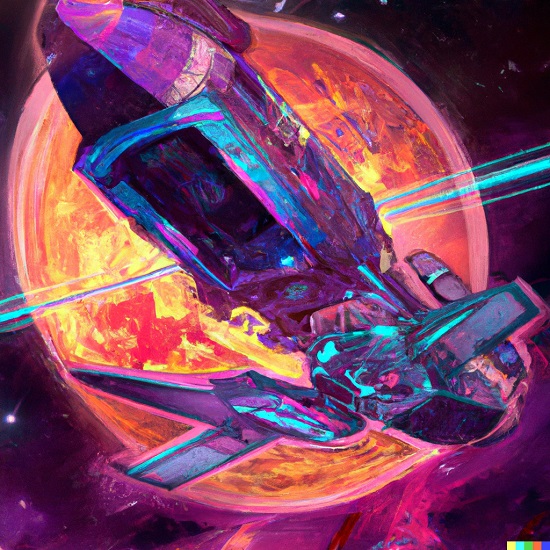
Nuclear fusion is the process by which atomic nuclei combine to form a new, heavier nucleus. This process releases a large amount of energy, making it a potential source of clean and limitless energy.
The process of nuclear fusion occurs naturally in stars, where the high temperature and pressure allow for the fusion of hydrogen atoms into helium. This releases a large amount of energy, which is what makes stars shine.
Scientists have been trying to replicate this process on Earth in order to harness its energy for use as a power source. The challenge lies in creating the extreme conditions necessary for fusion to occur. This requires extremely high temperatures, typically around 100 million degrees Celsius.
Nuclear Fusion for Space Travel
Theoretically, nuclear fusion could be a powerful and efficient means of propulsion for space travel. Because fusion reactions release a large amount of energy, they could be used to generate the high levels of thrust needed to propel a spacecraft through the vacuum of space.
Nuclear fusion has several potential benefits as a means of propulsion for space travel, compared to other technologies. For one, fusion reactions release more energy per unit of fuel than chemical reactions, which are typically used in traditional spacecraft propulsion systems. This means that fusion-powered spacecraft would be able to achieve higher speeds and better fuel efficiency, enabling longer missions and larger payloads.
In addition, fusion reactions do not produce harmful byproducts like greenhouse gases or radioactive waste. This makes them a cleaner and more sustainable option for powering spacecraft, as they would not pollute the environment or expose astronauts to harmful radiation.
Furthermore, the fuel for fusion reactions, hydrogen, is abundant and easily obtainable from water. This means that fusion-powered spacecraft would not be limited by the availability of fuel, and could potentially operate indefinitely as long as they had access to a supply of water.
Overall, the potential benefits of using nuclear fusion for space travel make it an exciting area of research and development. By providing a source of propulsion that is powerful, efficient, and clean, fusion could enable humanity to explore the depths of space and unlock new possibilities for discovery and innovation.
A Fusion-Powered Spacecraft

One potential design for a fusion-powered spacecraft would involve the use of a fusion reactor to heat hydrogen gas to the extremely high temperatures needed for fusion to occur. The resulting plasma would then be expelled through a nozzle, providing the necessary thrust to move the spacecraft.
To achieve this, the fusion reactor would need to be able to confine the plasma using powerful magnetic fields. This would prevent the plasma from touching the walls of the reactor, which would be damaged by the extreme heat and radiation. The plasma would be carefully controlled and directed through the nozzle to provide the desired amount of thrust.
The spacecraft would also need a fuel supply, likely in the form of hydrogen gas stored in tanks. This would be fed into the fusion reactor as needed, allowing the spacecraft to maintain its propulsion over long periods of time.
In addition to the fusion reactor and fuel tanks, a fusion-powered spacecraft would also require other systems and equipment. This could include life support systems for the astronauts, sensors and communication equipment for navigation and communication, and other systems needed for the spacecraft to function.
Fusion-powered spacecraft would have several advantages over traditional chemical propulsion systems. Because fusion reactions release more energy per unit of fuel than chemical reactions, they would be able to achieve higher speeds and better fuel efficiency. This could enable longer missions and larger payloads, making fusion an attractive option for space exploration.
The Challenge of Building a Fusion Reactor for a Spacecraft
The technology for building a fusion reactor small enough to fit on a spacecraft does not yet exist. Developing such technology would require significant research and development, as well as advances in materials science and engineering.
Building a fusion reactor small enough to fit on a spacecraft is a challenging task due to the extreme conditions needed for fusion to occur. In order to sustain fusion reactions, a reactor must be able to maintain temperatures of around 100 million degrees Celsius. This requires advanced materials and engineering techniques, as well as powerful magnetic fields to confine the plasma.
In addition, the reactor must be able to operate continuously for long periods of time, providing a steady source of propulsion for the spacecraft. This requires the development of advanced control systems and high-performance components that can withstand the extreme conditions of the fusion reaction.
Another challenge is the need for a compact and lightweight design. A fusion reactor must be small enough to fit on a spacecraft, while also being lightweight enough to not overly burden the spacecraft’s propulsion. This requires careful optimization of the reactor’s design, as well as the use of advanced materials and manufacturing techniques.
Overall, building a fusion reactor small enough to fit on a spacecraft is a daunting task that requires significant research and development. Despite these challenges, the potential benefits of fusion-powered space travel make it an exciting area of research that could open up new possibilities for exploration and discovery.
In summary, while the possibilities of using nuclear fusion for space travel are exciting, there is still much work to be done before these ideas become a reality. With continued research and development, however, it is possible that fusion could one day be used to power spacecraft and enable humanity to explore the depths of space.
This essay was created by ChatGPT and the images by DALL-E 2. Edited by Omri Shabath.



